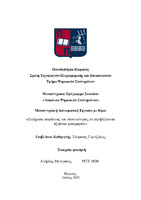Ζητήματα ασφάλειας και ιδιωτικότητας σε περιβάλλοντα έξυπνων μεταφορών

Προβολή/
Λέξεις κλειδιά
ITS ; Έξυπνα συστήματα μεταφορών ; Ζητήματα ιδιωτικότητας ; Ζητήματα ασφάλειας ; Privacy issues ; Security issuesΠερίληψη
Τα Έξυπνα Συστήματα Μεταφορών (ITS) αποσκοπούν στην ενίσχυση της αποδοτικότητας των υπαρχόντων συστημάτων μεταφορών μέσω της ενσωμάτωσης ποικίλων τύπων τεχνολογιών (π.χ. συστήματα αισθητήρων, ελέγχου, ανάλυσης και μετάδοσης πληροφοριών) που επιτρέπουν τη βελτίωση της κινητικότητας, τη δραστική μείωση του περιβαλλοντικού αποτυπώματος καθώς και τη μεγιστοποίηση των οφελών προς το επιβατικό κοινό. Η τοπολογία δικτύου στην οποία βασίζονται τα ITS, τα αδόμητα ασύρματα δίκτυα οχημάτων (VANETs), συνιστά ένα εξαιρετικά περίπλοκο, ετερογενές και ευμετάβλητο περιβάλλον το οποίο παρέχει στα οχήματα τη δυνατότητα να επικοινωνούν μεταξύ τους διαμοιραζόμενα πολύτιμες πληροφορίες σχετικά με τις εκάστοτε οδικές και κυκλοφοριακές συνθήκες. Αν και οι δυνατότητες διασύνδεσης που προσφέρουν τα VANETs βελτιώνουν σημαντικά τη συνολική ασφάλεια στον τομέα των καθημερινών μετακινήσεων, η ‘ανοιχτή’ φύση τους εγείρει πολλαπλά ζητήματα ασφάλειας και ιδιωτικότητας που συσχετίζονται με στόχους όπως η εμπιστευτικότητα, η διαθεσιμότητα, η ακεραιότητα, η αυθεντικοποίηση η μη αποποίηση, η ιδιωτικότητα της τοποθεσίας, η ιδιωτικότητα της ταυτότητας, η ανωνυμία και η μη-συνδεσιμότητα.
Στο πλαίσιο αυτό, καθώς ολοένα και περισσότερα αυτόνομα οχήματα βγαίνουν στο προσκήνιο, ο τομέας των μεταφορών αλλάζει άρδην μορφή. Με την απαίτηση για διασυνδεσιμότητα να αυξάνεται διαρκώς και με δεδομένο ότι τα νέας γενιάς αυτόνομα οχήματα ενσωματώνουν ένα εύρος τεχνικών μηχανικής μάθησης και συστημάτων τεχνητής νοημοσύνης στη λειτουργία τους, εμφανίζεται ένα νέο φάσμα απειλών οι οποίες συχνά εκδηλώνονται με τη μορφή κακόβουλων επιθέσεων. Οι επιθέσεις αυτές μπορεί να επιφέρουν οικονομικές απώλειες, τροχαία ατυχήματα, αποκάλυψη ευαίσθητων και άλλων τύπων προσωπικών δεδομένων, ακόμα και να θέσουν σε κίνδυνο τη ζωή των χρηστών. Επομένως, είναι αναγκαία η εφαρμογή κατάλληλων μέτρων ασφαλείας για τον μετριασμό των επιπτώσεων των κινδύνων, ειδικά καθώς αυτές οι επιθέσεις απειλούν την ασφάλεια, την ασφάλεια και ακόμη και την ιδιωτικότητα των επιβατών οχημάτων και των άλλων χρηστών του δρόμου, μαζί με τους πεζούς.
Στην παρούσα εργασία αρχικά περιγράφουμε με συνοπτικό τρόπο την αρχιτεκτονική των έξυπνων συστημάτων μεταφορών αναφέροντας τα πρότυπα που διέπουν τη λειτουργία τους. Ακολούθως προβαίνουμε σε ενδελεχή ανάλυση των ζητημάτων ασφάλειας και ιδιωτικότητας που ανακύπτουν σε αυτά προτείνοντας συγχρόνως πιθανές τεχνικές-αντίμετρα για τον περιορισμό των διαφόρων τύπων κινδύνων που «γεννώνται» από αυτά. Τέλος, εξετάζουμε ως μελέτη περίπτωσης την χρήση διασυνδεδεμένων οχημάτων αυτοματοποιημένης οδήγησης αξιολογώντας το επίπεδο ασφάλειας και ιδιωτικότητας που παρέχουν.


